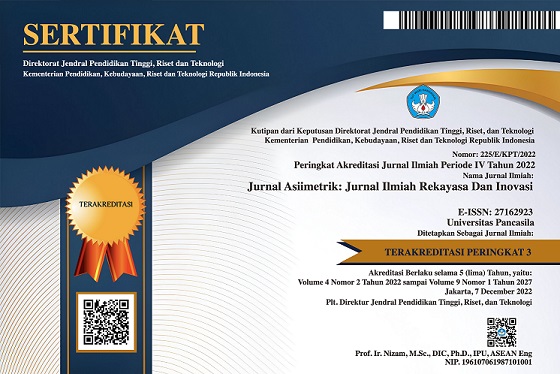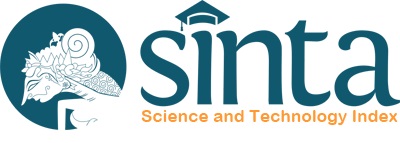Analisis Sentiment Twitter Berbasis Grid Search Algorithm (GSA) Dengan Metode Support Vector Machine (SVM)
Twitter Sentiment Analysis Based on Grid Search Algorithm (GSA) With Support Vector Machine (SVM) Method
DOI:
https://doi.org/10.35814/asiimetrik.v5i1.3789Keywords:
classification, SVM, GSA, Twitter, accuracyAbstract
Twitter is a social networking service that has undergone tremendous growth and is gaining worldwide popularity at an accelerated rate. Twitter allows for the expression of unbiased thoughts on a variety of issues and can assist businesses in providing public feedback on well-known brands and items. Twitter is having trouble with good and negative answers. Researchers evaluated English-language tweets to determine the proportion of positive and negative replies to popular companies and items. This study will explore Twitter sentiment analysis utilizing the Grid Search Algorithm (GSA) and the support vector machine (SVM) technique. GSA is utilized by the feature selection model to optimize the classification procedure. In this work, training data and testing data are required to do sentiment analysis. Sanders Twitter 0.2 utilizes a dataset consisting of tweets retrieved from Twitter using the search terms @apple, #google, #microsoft, and #twitter. The collected dataset was manually annotated and included 654 negatives, 570 positives, 2503 neutrals, and 1786 irrelevant entries. Data are loaded, tokenized, weighted, preprocessed, filtered, and classified to conduct a sentiment analysis. The application's sentiment analysis achieved a degree of accuracy of up to 79% based on testing. The ratio of neutral and bad tweets on data sandboxes tends to be greater than the percentage of positive tweets, hence optimization rather than accuracy is obtained.
Downloads
References
Al Rivan, M.E., Rachmat, N. dan Ayustin, M.R. (2020) ‘Klasifikasi Jenis Kacang-Kacangan Berdasarkan Tekstur Menggunakan Jaringan Syaraf Tiruan’, Jurnal Komputer Terapan, 6(1), hal. 89–98.
Alasadi, S.A. dan Bhaya, W.S. (2017) ‘Review of data preprocessing techniques in data mining’, Journal of Engineering and Applied Sciences, 12(16), hal. 4102–4107.
Elgeldawi, E. dkk. (2021) ‘Hyperparameter tuning for machine learning algorithms used for arabic sentiment analysis’, Informatics, 8(79), hal. 1–21.
Hayatin, N., Marthasari, G.I. dan Nuarini, L. (2020) ‘Optimization of Sentiment Analysis for Indonesian Presidential Election using Naïve Bayes and Particle Swarm Optimization’, Jurnal Online Informatika, 5(1), hal. 81–88.
Iqbal, F. dkk. (2019) ‘A hybrid framework for sentiment analysis using genetic algorithm based feature reduction’, IEEE Access, 7, hal. 14637–14652.
Luqyana, W.A., Cholissodin, I. dan Perdana, R.S. (2018) ‘Analisis Sentimen Cyberbullying pada Komentar Instagram dengan Metode Klasifikasi Support Vector Machine, Jurnal Pengembangan Teknologi Informasi dan Ilmu Komputer, 2(11), hal. 4704–4713.
Naiknaware, B.R., Kawathekar, S. dan Deshmukh, S.N. (2017) ‘Sentiment analysis of indian government schemes using twitter datasets’, IOSR Journal of Computer Engineering, 1, hal. 70–78.
PD, W.M. dan Haryoko (2019) ‘Optimization of parameter support vector machine (SVM) using genetic algorithm to review Go-Jek’s services’, in 2019 4th International Conference on Information Technology, Information Systems and Electrical Engineering (ICITISEE). 2019 4th International Conference on Information Technology, Information Systems and Electrical Engineering (ICITISEE), Yogyakarta, Indonesia: IEEE, hal. 301–304.
Que, V.K.S., Iriani, A. dan Purnomo, H.D. (2020) ‘Analisis Sentimen Transportasi Online Menggunakan Support Vector Machine Berbasis Particle Swarm Optimization’, Jurnal Nasional Teknik Elektro dan Teknologi Informasi| Vol, 9(2), hal. 162–170.
Rustam, F. dkk. (2019) ‘Tweets classification on the base of sentiments for US airline companies’, Entropy, 21(1078), hal. 1–22.
Saif, H. dkk. (2013) ‘Evaluation datasets for Twitter sentiment analysis: a survey and a new dataset, the STS-Gold’, in Social and Expressive Media: Approaches and Perspectives from AI (ESSEM 2013). 1st Interantional Workshop on Emotion and Sentiment, Italy: The Open University’s, hal. 1–13.
Wardhani, N.K. dkk. (2018) ‘Sentiment analysis article news coordinator minister of maritime affairs using algorithm naive bayes and support vector machine with particle swarm optimization’, J. Theor. Appl. Inf. Technol, 96(24), hal. 8365–8378.





























